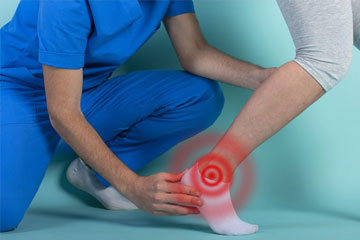
The spring is a wakeup call for all living things. The trees shed their snowy blankets and began to wear green leaves and colorful flowers. Likewise, we replace our heavy clothes with lighter outfits. Seasonal changes can affect your body in different ways, especially your feet and skin. Among other things, your feet and limbs are susceptible to injury as you switch to sandals and start physical activities like jogging, walking and so on. Here are some tips for spring foot care.
- Use proper footwear
Using the right footwear is important to keep your feet comfortable and stabilize your ankles and feet. If you have a foot-related condition, consult a podiatrist to know what kinds of shoes are best for your feet.
- Regular inspection
Self-examining your feet will help identify problems such as cracks, cuts, sores and blisters and take action to address them before they get worse. Proper treatment at the initial stage is important to cure the condition without leaving any scars.
- Use a Foot Cream/Lotion
Applying a thin layer of foot cream or lotion on the bottom and top of your feet will enhance flexibility and keep the skin smooth. Don’t apply cream on or between your toes as it will encourage the growth of fungus. Instead of cream, you can apply talcum powder in those areas.
- Examine Your Toenails Regularly
Closely observe changes happening to your toe nails. If you find abnormalities like thickening or discoloration, consult your doctor as it might be the sign of fungal infection. Trimming and cleaning your toenails using a toenail clipper at proper intervals is an effective method to protect your toenails from a fungal attack.
- Use Sunscreen
Apply sunscreen on your feet before you step out. Use sunscreen with strong UV protection to protect your skin from harmful ultraviolet rays.
- Keep your feet clean
Clean your feet regularly with soap and water and dry them carefully, especially the areas between the toes. Immerse your feet in warm water with herbal oils or Epsom salt for 10 minutes. Scrub them with pumice stone to remove the dead cells. Massaging with oil or emollient-rich lotion will help keep your feet soft and hydrated. If your nails are healthy, you can use nail polish. Use an acetone and non-acetone nail polish remover for taking off polish.
Caring for your feet promotes good hygiene and can also help you identify any problems that may need attention. If you notice any skin or nail problems, don’t delay seeing your podiatrist.